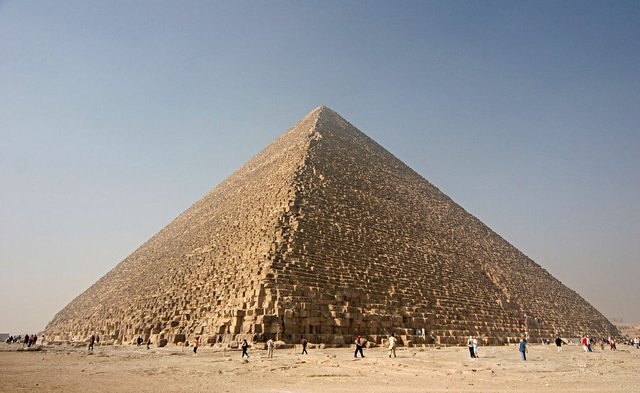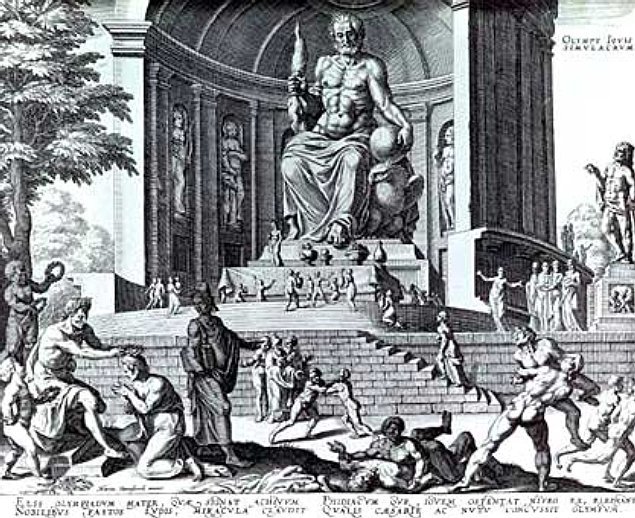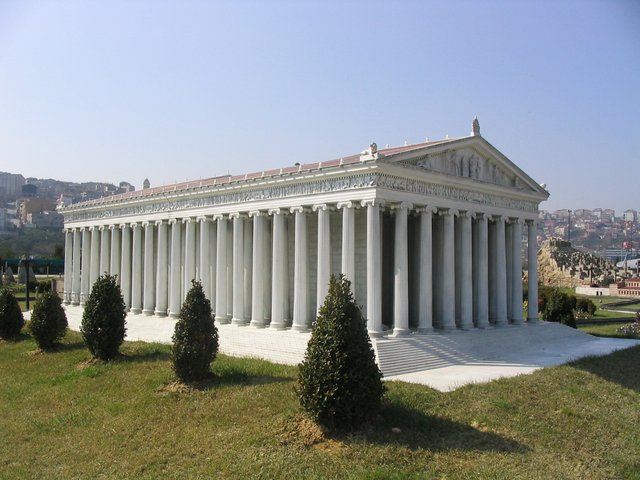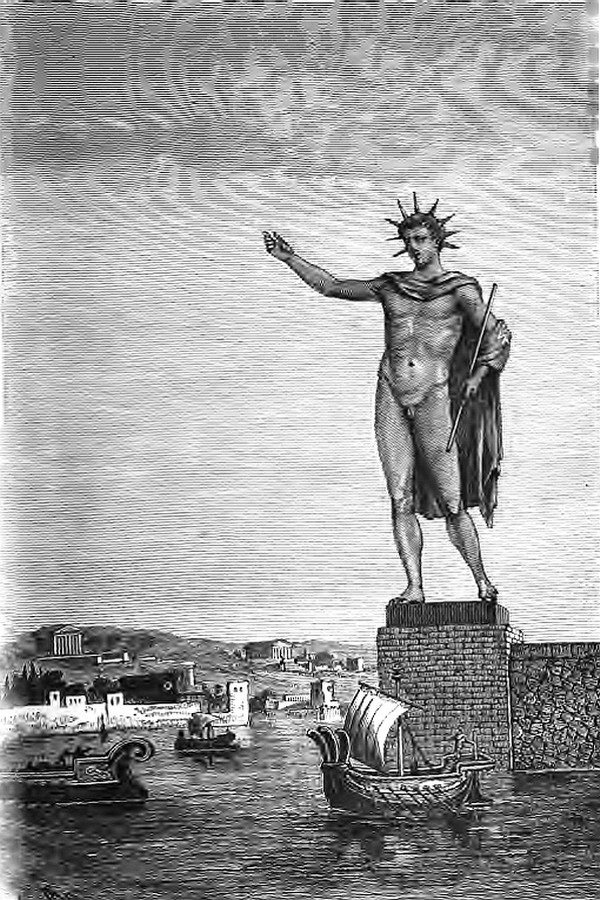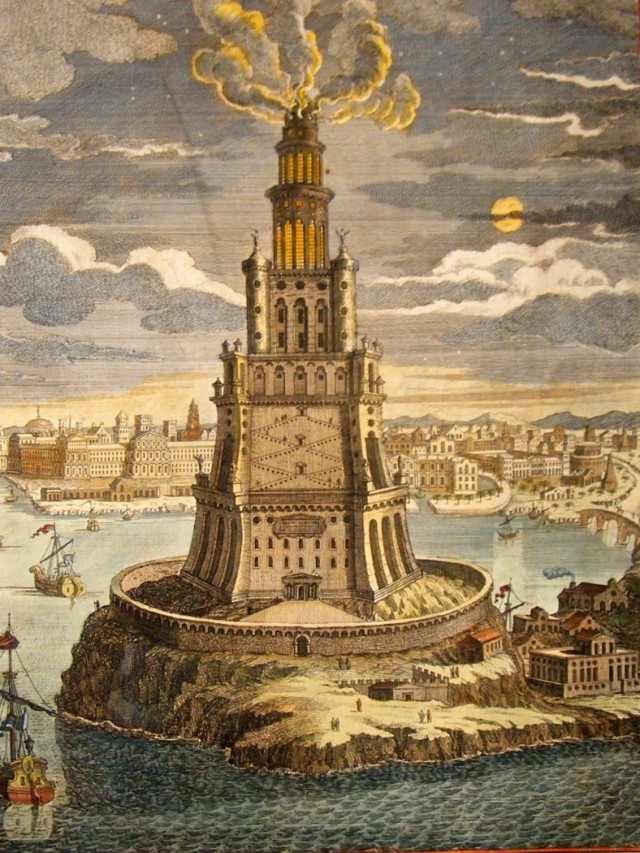The Seven World Wonders
The Great Pyramid of Giza
The Great Pyramid of Giza (also known as the Pyramid of Khufu or the Pyramid of Cheops) is the oldest and largest of the three pyramids in the Giza pyramid complex bordering what is now El Giza, Egypt. It is the oldest of the Seven Wonders of the Ancient World, and the only one to remain largely intact.
The Hanging Gardens of Babylon
The Hanging Gardens of Babylon, one of the Seven Wonders of the Ancient World, is the only one whose location has not been definitively established.
The Hanging Gardens were a distinctive feature of ancient Babylon. They were a great source of pride to the people.
The Statue of Zeus at Olympia
The Statue of Zeus at Olympia was a giant seated figure, about 13 m (43 ft) tall made by the Greek sculptor Phidias around 435 BC at the sanctuary of Olympia, Greece, and erected in the Temple of Zeus there. A sculpture of ivory plates and gold panels over a wooden framework, it represented the god Zeus sitting on an elaborate cedar wood throne ornamented with ebony, ivory, gold and precious stones.
It was lost and destroyed during the 5th century AD with no copy ever being found, and details of its form are known only from ancient Greek descriptions and representations on coins.
The temple of Artemis
The Temple of Artemis or Artemision also known less precisely as the Temple of Diana, was a Greek temple dedicated to the goddess Artemis. It was located in Ephesus (near the modern town of Selçuk in present-day Turkey). It was completely rebuilt three times before its eventual destruction in 401 AD. Only foundations and sculptural fragments of the latest of the temples at the site remain.
The Mausoleum at Halicarnassus
The Mausoleum at Halicarnassus or Tomb of Mausolus was a tomb built between 353 and 350 BC at Halicarnassus (present Bodrum, Turkey) for Mausolus, a satrap in the Persian Empire, and his sister-wife Artemisia II of Caria. The Mausoleum was approximately 45 m (148 ft) in height, and the four sides were adorned with sculptural reliefs, each created by one of four Greek sculptors—Leochares, Bryaxis, Scopas of Paros and Timotheus. The finished structure of the mausoleum was considered to be such an aesthetic triumph that Antipater of Sidon identified it as one of his Seven Wonders of the Ancient World.
The Colossus of Rhodes
The Colossus of Rhodes was a statue of the Greek titan-god of the sun Helios, erected in the city of Rhodes, on the Greek island of the same name, by Chares of Lindos in 280 BC. It was constructed to celebrate Rhodes' victory over the ruler of Cyprus, Antigonus I Monophthalmus, whose son unsuccessfully besieged Rhodes in 305 BC. Before its destruction in the earthquake of 226 BC, the Colossus of Rhodes stood over 30 metres (98 feet) high, making it one of the tallest statues of the ancient world.
The Lighthouse of Alexandria
The Lighthouse of Alexandria, sometimes called the Pharos of Alexandria was a lighthouse built by the Ptolemaic Kingdom between 280 and 247 BC which was between 393 and 450 ft (120 and 137 m) tall. Badly damaged by three earthquakes between AD 956 and 1323, it then became an abandoned ruin. It was the third longest surviving ancient wonder (after the Mausoleum at Halicarnassus and the extant Great Pyramid of Giza) until 1480, when the last of its remnant stones were used to build the Citadel of Qaitbay on the site.
